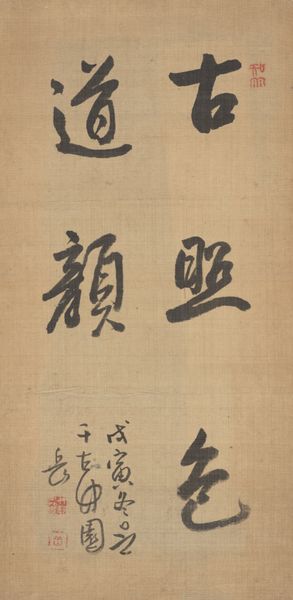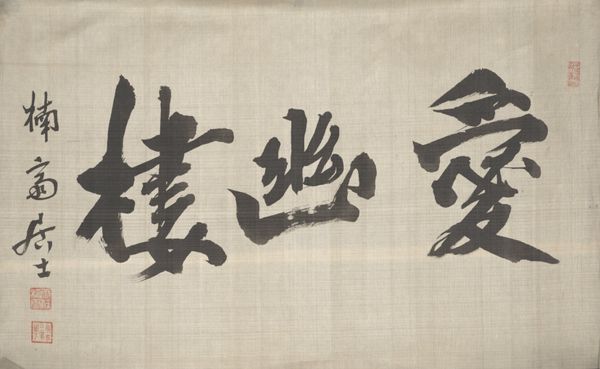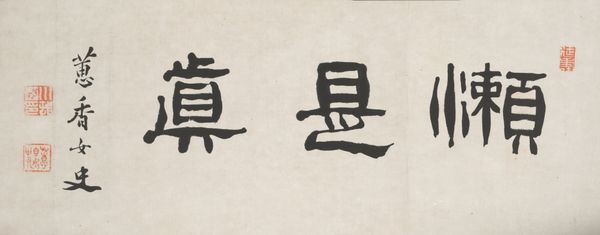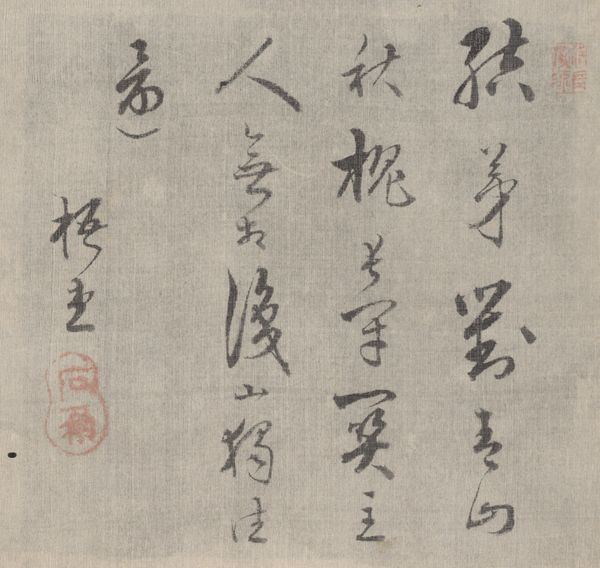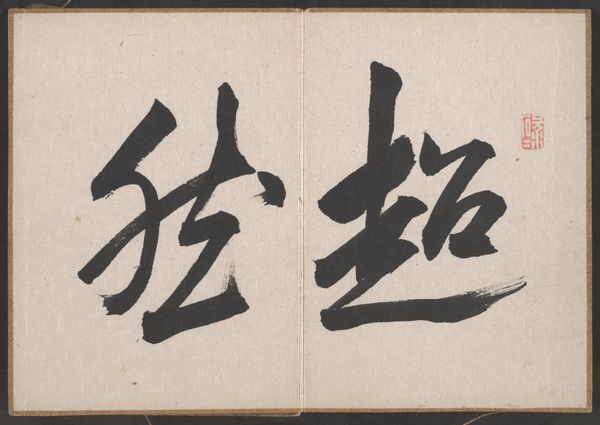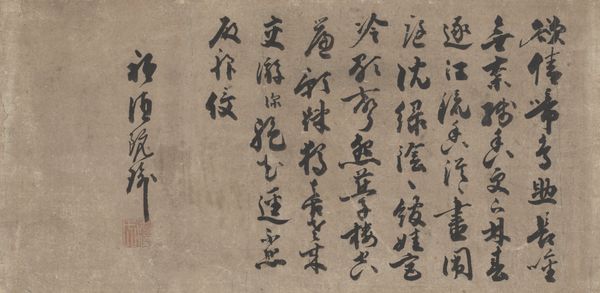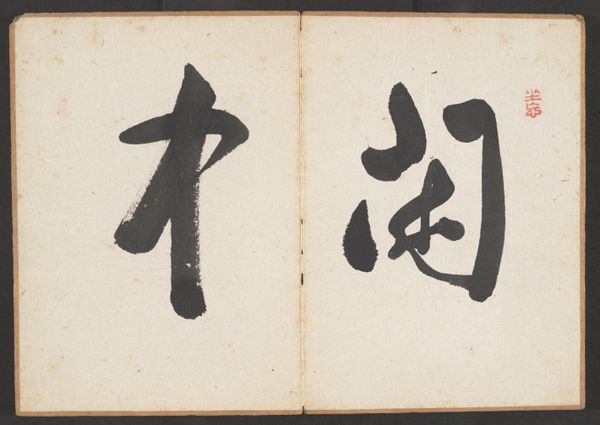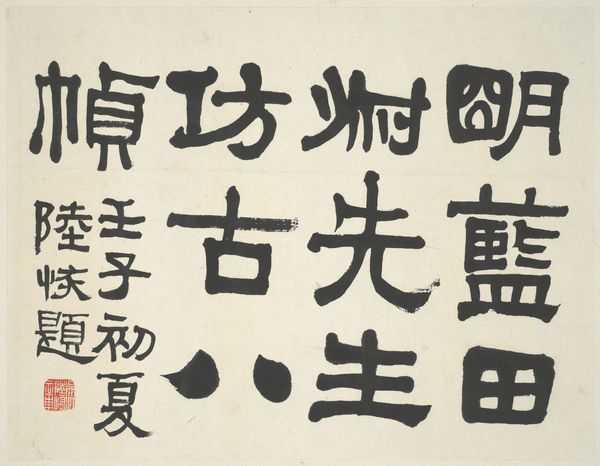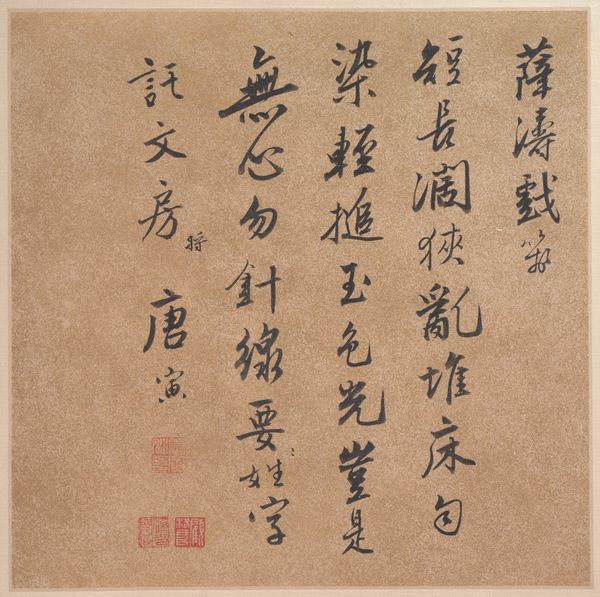
paper, ink
#
asian-art
#
paper
#
ink
#
calligraphy
Dimensions: 5 1/2 × 7 in. (13.97 × 17.78 cm)
Copyright: Public Domain
Yamamoto Tōkai created this calligraphy using ink on paper. Calligraphy as an art form has deep historical and cultural roots throughout Asia. The visual representation of language carries complex philosophical and social significance. Clerical script, developed during the Han dynasty, is known for its simplified, stylized strokes, which emphasize balance and clarity. The act of calligraphy is deeply meditative, often reflecting the artist's inner state. Yamamoto Tōkai’s brushstrokes evoke a sense of disciplined freedom. It can be read as a performance, or a dance, between tradition and individual expression. Calligraphy emphasizes the relationship between artist, text, and the act of creation. In a world often dominated by printed text, calligraphy remains an important way of connecting to cultural heritage. It reminds us of the tactile, personal dimensions of communication.
Comments
No comments
Be the first to comment and join the conversation on the ultimate creative platform.
